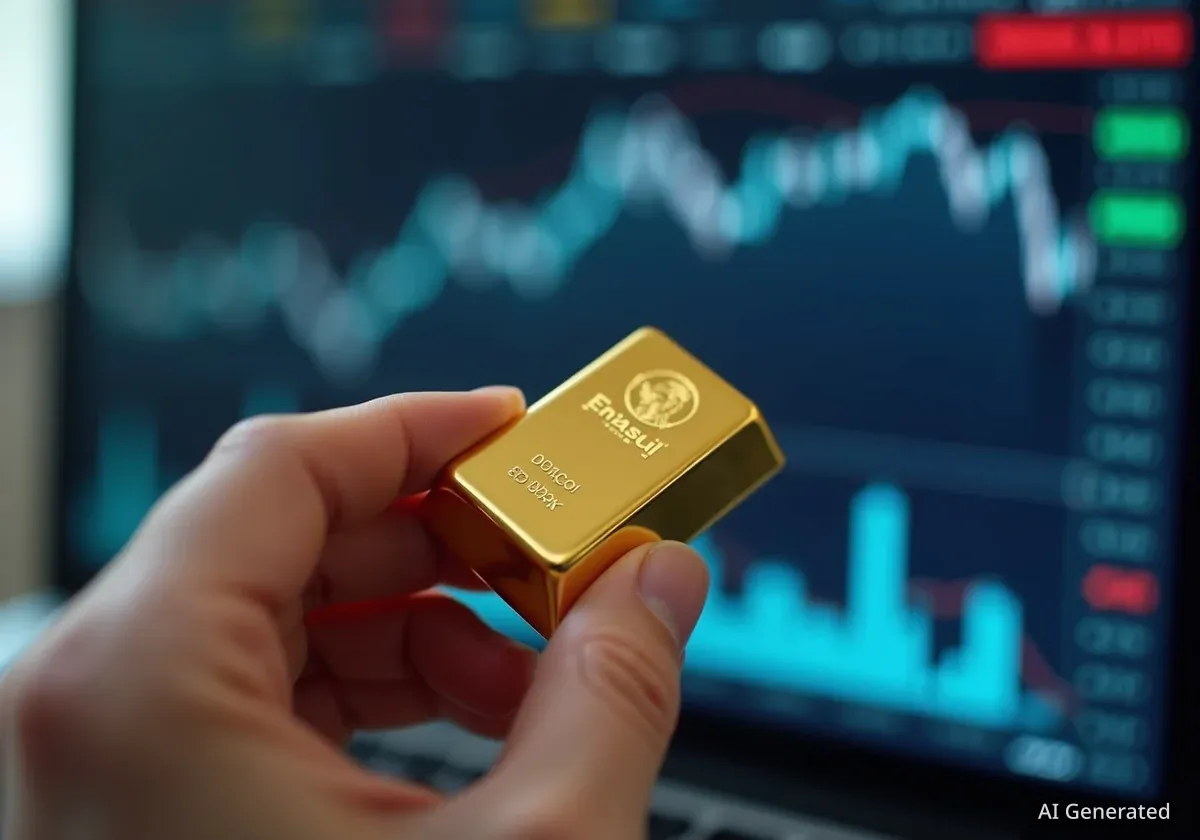Current financial markets are experiencing significant volatility, a trend largely influenced by a mix of investor optimism, fear of missing out (FOMO), and underlying anxieties. This dynamic environment suggests a cautious approach is warranted, particularly for those new to investing.
Key Takeaways
- Market volatility is shaped by optimism from past recoveries and strong emotional responses from investors.
- Defensive assets like gold, silver, and utility stocks have outperformed, signaling geopolitical uncertainty.
- Strategic portfolio adjustments, including stop orders and income-generating assets, are crucial for navigating market turbulence.
- New investors, who entered the market during periods of rapid growth, may be particularly sensitive to current fluctuations.
Understanding Current Market Dynamics
The financial landscape today is characterized by its unpredictability. One year ago, many new investors entered the market, driven by the strong recovery seen in April. This period fostered a sense of easy gains, leading to what some analysts describe as a 'loosey-goosey' attitude towards risk. However, the current environment has shifted, with markets now exhibiting considerable apprehension.
This shift is not solely based on economic fundamentals. Human psychology plays a significant role. The desire to participate in rising markets, known as Fear Of Missing Out (FOMO), often leads to aggressive buying. Conversely, the fear of losing existing gains, or 'F without the OMO,' can trigger sudden sell-offs, contributing to sharp market swings. These emotional drivers can amplify both upward and downward movements, making the market highly sensitive to news and rumors.
Market Sentiment Snapshot
- The S&P 500 Index (SPX) recently traded at 6,640.81, showing a 1.35% change.
- Its 52-week high was 6,764.58, while the 52-week low stood at 4,835.04.
- Such fluctuations underscore the current instability, with daily changes reflecting rapid shifts in investor confidence.
Strategic Portfolio Allocation for Stability
In such volatile conditions, a balanced investment strategy becomes paramount. Many experienced investors are adjusting their portfolios to include defensive allocations. These assets typically perform better during periods of economic uncertainty or market downturns.
Examples of defensive allocations include gold and silver, which are often considered safe-haven assets. Utilities and defense stocks also fall into this category, as their demand remains relatively stable regardless of broader economic conditions. International quality holdings can further diversify a portfolio, reducing dependence on a single market's performance.
"Current market volatility is driven by optimism from the recovery in April, FOMO, and F without the OMO," states Joseph L. Shaefer, an investing group leader. "I also own defensive allocations, including gold, silver, utilities, defense stocks, and international quality holdings, to reduce this volatility."
Outperformance of Precious Metals
Interestingly, gold (GLD) and silver (SLV) have shown notable performance in recent times. They have quietly outperformed both technology and communication services sectors. This trend is a strong indicator of underlying geopolitical uncertainty and increasing central bank buying. Central banks often increase their gold reserves during times of global instability to diversify away from fiat currencies.
Geopolitical Factors
Global events, including political tensions and economic policy shifts, significantly influence investor behavior. The demand for safe-haven assets like gold and silver typically rises when geopolitical risks are elevated, as investors seek to protect their wealth from potential currency depreciation or economic shocks.
Risk Management and Income Generation
Effective risk management is essential in a fluctuating market. Implementing stop orders is a common strategy to limit potential losses. A stop order automatically sells an asset if its price falls to a predetermined level, preventing further downside. This tool helps investors manage risk without constant monitoring.
Another crucial element for navigating turbulence is a focus on income-generating assets. These include certain Exchange Traded Funds (ETFs), Closed-End Funds (CEFs), Business Development Companies (BDCs), and companies with strong preferred shares. These assets provide regular income streams, which can help cushion a portfolio during periods of capital depreciation.
According to market data, the top-performing ETFs like QQQ (Nasdaq 100), SPY (S&P 500), and DIA (Dow Jones Industrial Average) have seen varied performance, with QQQ showing a 1.97% change and DIA a 1.06% change. This highlights the importance of diversified income sources rather than relying solely on growth-oriented assets.
The Role of New Investors
The influx of new investors over the past year has added a new layer of complexity to market behavior. Many of these individuals entered the market during a bullish phase, experiencing rapid gains. This can lead to an expectation of continuous upward movement and a lack of experience in managing downturns. When markets become skittish, these newer participants may react more emotionally, exacerbating volatility.
Education on risk management, diversification, and long-term investing principles is vital for this segment of the investor population. Understanding that market corrections are a normal part of the economic cycle can help mitigate panic selling and foster more rational decision-making.
- Diversification: Spreading investments across different asset classes and sectors.
- Long-Term View: Focusing on investment goals over several years, rather than short-term fluctuations.
- Risk Tolerance: Understanding one's comfort level with potential losses.
In conclusion, while a full 'market meltdown' may not be imminent, the current environment demands careful consideration. A combination of emotional investing, geopolitical uncertainties, and the presence of inexperienced market participants contributes to heightened volatility. By adopting defensive strategies, focusing on income-generating assets, and practicing sound risk management, investors can better prepare for ongoing market turbulence.





